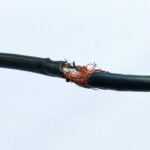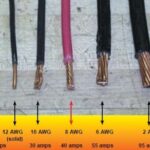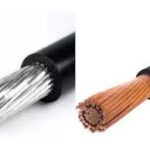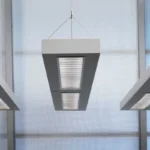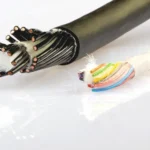In today’s power-driven world, electrical safety is not just about using high-quality cables — it’s about maintaining them properly.
One of the most common and overlooked hazards is a frayed service power cable. While it may seem like a minor issue at first glance, a damaged or worn-out cable can pose serious electrical and fire risks if ignored.
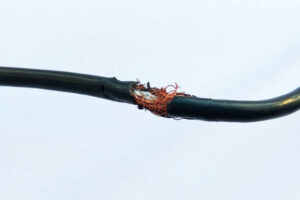
Frayed Service Power Cable
This article explains the causes, dangers, and best practices for dealing with frayed power cables — and how proper inspection and replacement can protect both people and property.
What Is a Frayed Service Power Cable?
A frayed power cable refers to any electrical cord or service cable where the outer insulation or conductor shielding is worn, cracked, or broken.
Over time, mechanical stress, bending, heat, UV exposure, or even rodents can damage the insulation layer, leaving exposed copper wires that are dangerous to touch.
Common Causes of Cable Fraying
Aging and wear from long-term use
Improper installation or sharp bends near connectors
Overheating due to overloading or poor ventilation
Environmental damage (moisture, oil, chemicals, sunlight)
Mechanical stress from vibration or frequent movement
Why Frayed Power Cables Are Dangerous
Even a small break in the insulation can cause electrical leakage or short circuits. Here are the main risks involved:
⚡ 1. Electric Shock
Exposed wires can deliver dangerous voltages when touched, potentially resulting in serious injury or fatal shock.
🔥 2. Fire Hazard
Damaged cables can spark or overheat, igniting surrounding materials. Many electrical fires begin with unnoticed cable wear.
⚙️ 3. Equipment Damage
Power fluctuations from faulty wiring can shorten the lifespan of connected devices or cause immediate equipment failure.
🧯 4. Code Violations
Using frayed or damaged power cables violates most electrical safety codes (such as NEC and IEC) and can result in penalties or insurance issues.
How to Identify a Frayed or Damaged Power Cable
Routine inspection is the first step toward prevention.
Look for the following warning signs:
Cracks or splits in insulation
Exposed copper strands
Burn marks or discoloration
Stiffness or brittleness of the cable jacket
Flickering lights or intermittent power when the cable is moved
If any of these signs appear, immediately disconnect power and have the cable evaluated by a qualified electrician.
What to Do If You Discover a Frayed Cable
Unplug the cable immediately.
Never handle a frayed or exposed wire while it’s connected to power.Do not repair with tape alone.
Temporary fixes like electrical tape can worsen the situation. Replacement is always safer.Replace or professionally repair the cable.
Use cables that match the correct voltage, current, and insulation rating for the application.Dispose of damaged cables properly.
Follow local electronic waste disposal regulations.
Preventing Cable Damage in the Future
To reduce the risk of fraying, follow these best practices:
Avoid tight bends or sharp corners during installation
Keep cables dry and away from heat sources
Use strain reliefs to minimize mechanical stress
Regularly inspect all power lines and connectors
Choose quality materials like heat-resistant or abrasion-resistant cables for industrial environments
Choosing Safer Power Cables
When replacing damaged cables, it’s vital to choose products that meet reliable insulation and durability standards.
TOT Wire & Cable provides a wide range of heat-resistant, flexible, and heavy-duty power cables designed for industrial, marine, and residential applications, ensuring both safety and long service life.
Conclusion
A frayed service power cable is not a small problem — it’s a potential safety hazard that demands immediate attention.
By inspecting regularly, replacing worn cables, and choosing high-quality insulated wires, you can prevent electrical accidents before they happen.
👉 Looking for safe, durable replacement power cables?
Contact TOT Wire & Cable today for expert recommendations and reliable cable solutions built for lasting safety.

